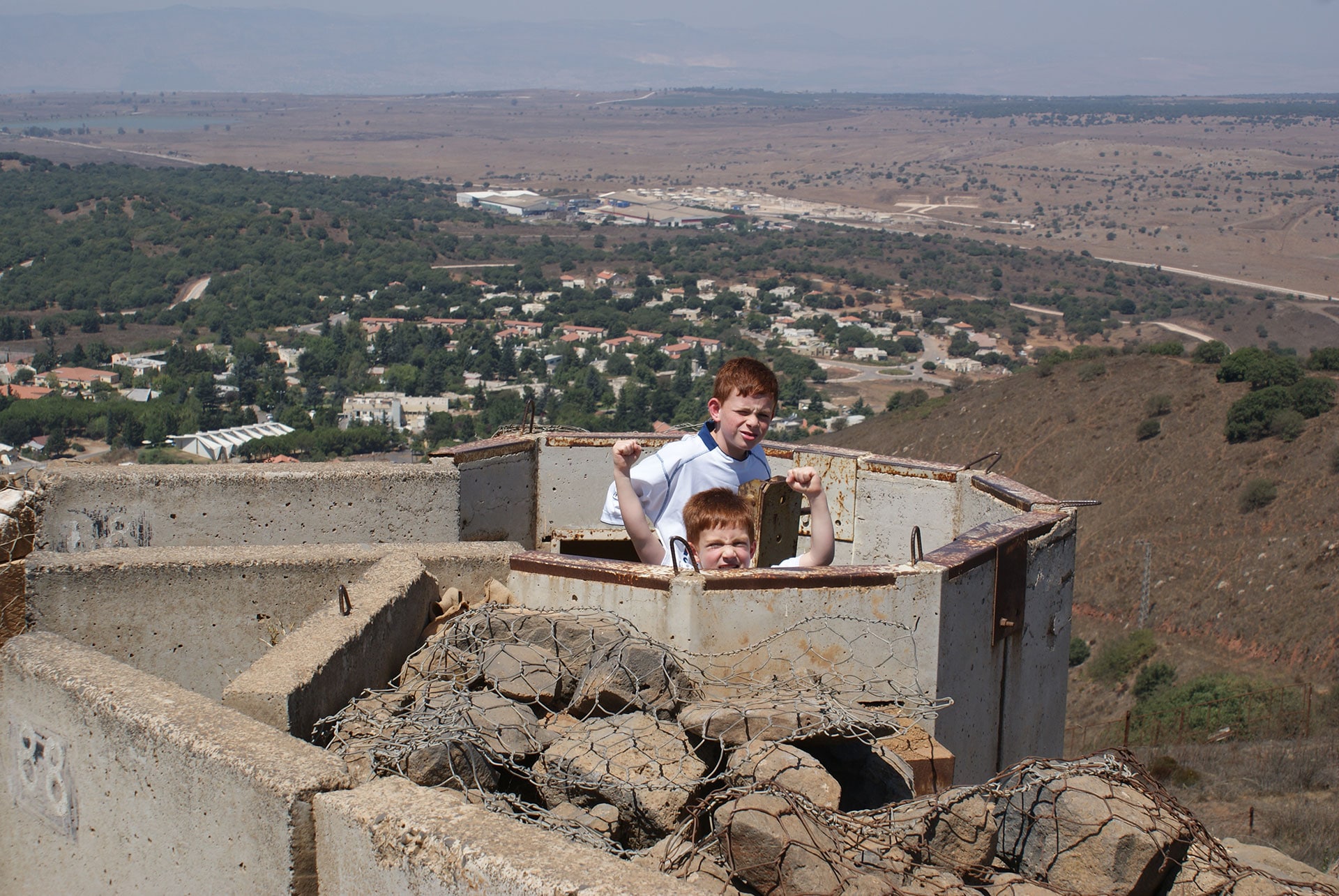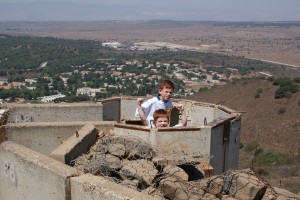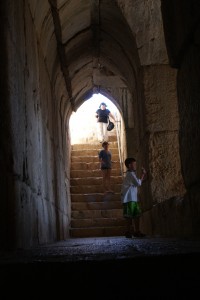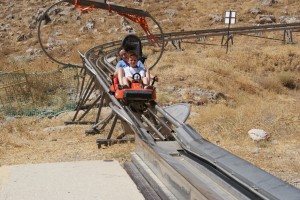Israel’s north is one of the most visited regions on the tourist route. There are a huge number of sites, including a number of UNESCO World Heritage Sites – again, one has to pick and choose.
Caesarea: This ancient Roman city is one of Israel’s best archaeological sites – the ruins of the old theater are fabulous and kids expecially can get an excellent idea of what a visit to the theatre would have been like in ancient Roman times. The city walls and the huge moat are very impressive. There are some interactive exhibits too – a movie describing the construction of the port in Roman times is good, and a new exhibit consisting of holograms where famous people from history come to life is very interesting for older kids (but not really suitable for young kids).
Golan Heights: this area, annexed by Israel after the 1967 six-day war, is an extremely worthwhile visit. The kids loved exploring the trenches on top of Mt. Bental, a mountain outpost overlooking Syria which saw action during various wars. We also enjoyed driving the Druze villages and the lunch we had at a small restaurant in one of the villages was outstanding. Israeli soldiers seemed to make up the vast bulk of patrons. During local school holidays the Talmudic village outside of Katzrin comes to life – when we were there families could make wine or olive oil using ancient techniques.
The Golan Heights is also one of the few areas in Israel where you can feel something of the great outdoors. It is a prime area for hiking, and there are many adventurous activities including horse riding and kayaking. We visited the ruins of Nimrod’s Castle – a spectacular mountaintop fortress with secret stairways, parapets and many possibilities for exploring. Unfortunately the evening tours of the site by lantern light was booked full when we wanted to go. This was the best archeological site we visited in northern Israel.
Sea of Galilee – famous for its many early Christian sites, the sea (which is really a lake) is beautiful and great for swimming, if you can find a decent beach. The best beaches are the private ones you need to pay for – but we were amazed that they closed so early – by 5pm in summer. The city beaches near Tiberias were stony and windy, though the water itself was great. We didn’t spend any time in Tiberias itself, and we missed the famous sites such as Capernaum as we had already had our fair share of ruins and ancient sites. The kids loved rafting on the Jordan River (really nothing more than gentle floating) nearby. Like most popular sites in Israel, it was packed! We also went for a hike in the Banias National Park – typical of any Israeli national park in summer, it was extremely busy with hiking families – quite pretty I guess, but not really worth a special trip. Also, unless you really go off the beaten track in Israel, it is almost impossible to avoid huge crowds during the school holiday season anywhere in the country.
Every trip to Israel should include the north – for those on a pilgrimage, it cannot be missed, and for nature lovers, its has a great deal of beauty. Accommodation is plentiful – bed and breakfast accommodation (known as “zimmers”) is very popular amongst Israelis, and these are generally good places to stay – though not necessarily cheaper than hotels. I’d say spend at least 2-3 days in north Israel. The national parks in Israel are tiny – big enough just to protect an ancient site, and there are many of them – so decide what you want to see – ancient synagogues, wonderful mosaics, cities from Roman cities, Crusader fortresses and ancient Tels (archeological mounds) that are mentioned in the Bible! You’ll find them all in north Israel. We found that we enjoyed the less hyped sites the best – fewer people, but equally or more interesting than the sites visited by the tour buses. The only big “site” that disappointed us was Acre – the city receives plenty of hype, but we found it to be dirty and it didn’t take long before our kids were bored.
PS: I plan great family trips to Israel and Jordan. Click here for more info.




